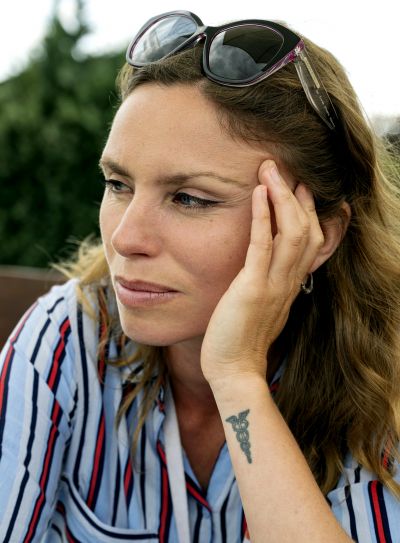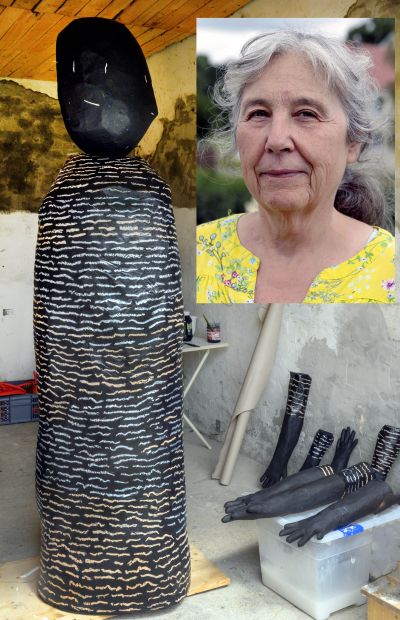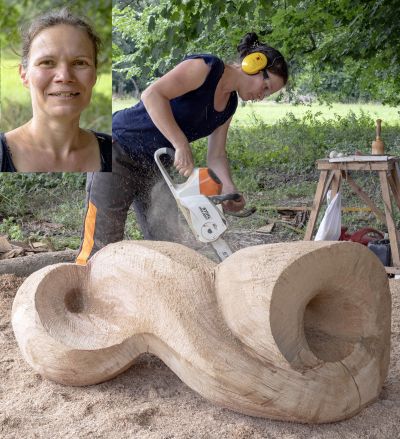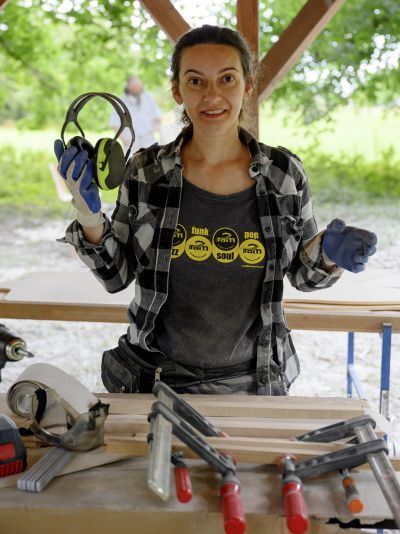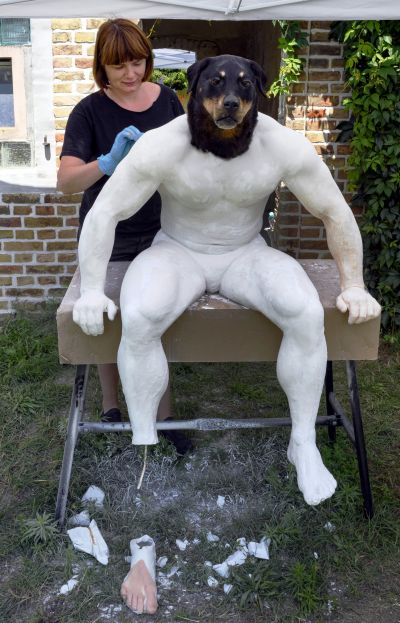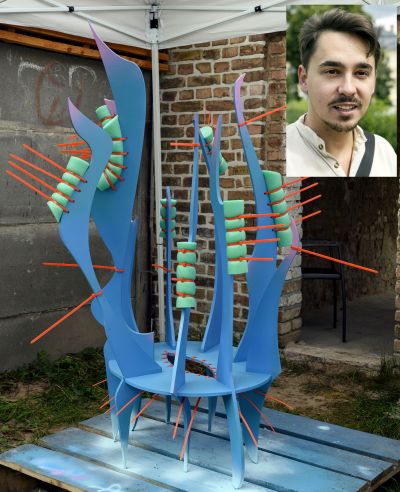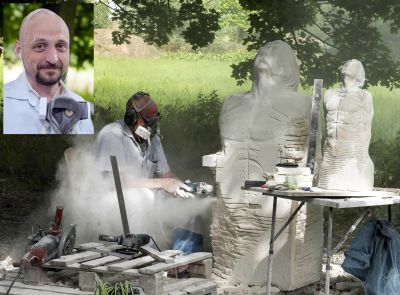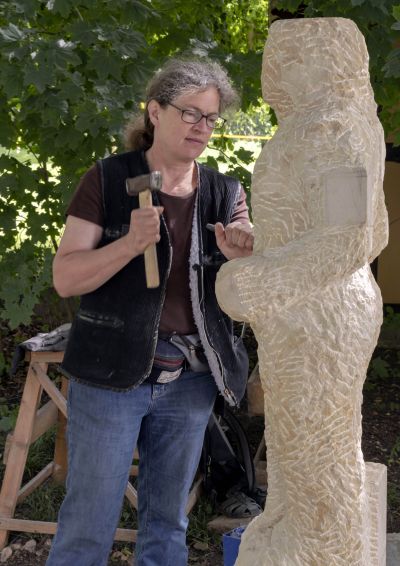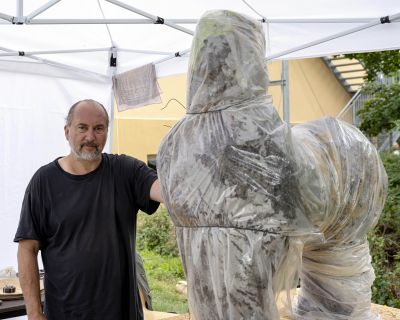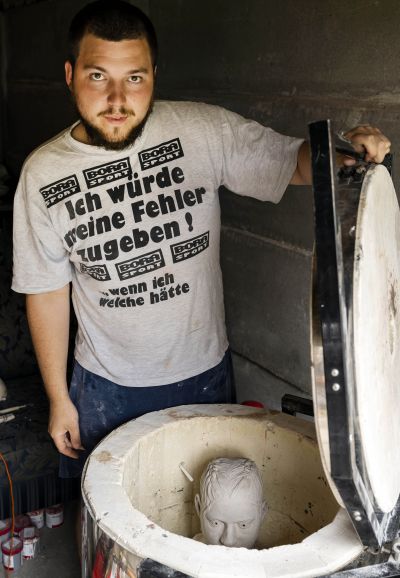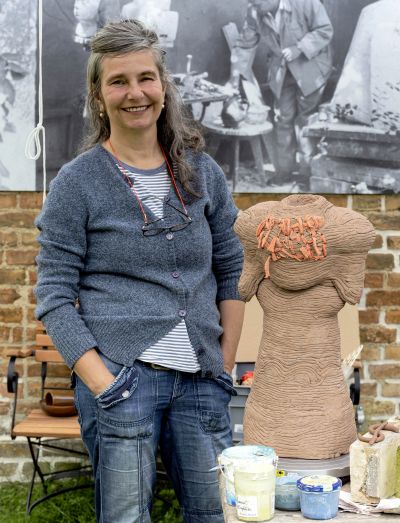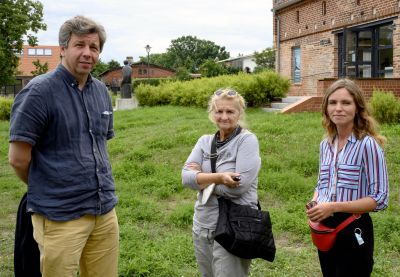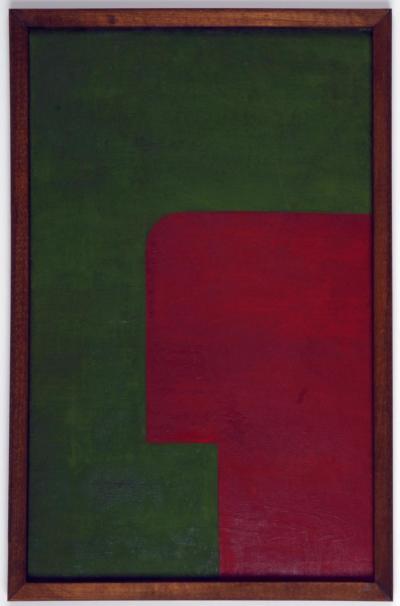THE ANCIENT WORLD – ROLE MODEL AND INSPIRATION? German-Polish open-air event for sculpted figures at Schloss Trebnitz from 28 July to 22 August 2021
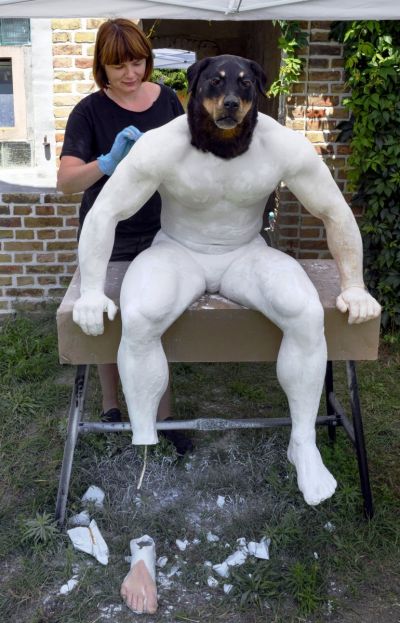
Iwona Rozbiewska
The caryatids evolved as an art motif in the world of Ancient Greece and always portrayed women. They bore the load of structural ceilings, but were considered a decorative element in architecture. Rozbiewska was inspired by this and created a work that is both architectural and conceptual. Her caryatids are released from their role as servants to architecture. The lopsided construction and the use of less noble sheets of plywood, which were cut to size and reworked, suggest that the contemporary caryatids have become autonomous. At the same time, the current motifs of the MeToo women’s movement resonate in this work.
Monika Szpener
She is fascinated by hybrid beings of man and animal. The most famous example in the ancient world was the god of the dead Anubis, who looked like a dog and connected the world of the living with that of the dead. In the open-air workshop, the artist worked on a figure which ultimately took on a form in which perfection and imperfection meet, with Szpener referring directly to the sculpture “Geschlagener Catcher” (1966) by Gustav Seitz. She created a body imprint of a modern bodybuilder for which the ideal proportions of the ancient world served as a reference. The connection of the torso to a taxidermied head of a dog can be assessed here as flagrant breach of the ideals of the ancient world. The artist, who strives for perfection, experiments a lot, for example by looking for the perfect material to best reproduce the structure of human skin. This hyperrealistic work begs the question of just how far technical imitations can go, where their limits are and what consequences we have to anticipate if we decide to go beyond these boundaries.
Norbert Delman
Without exploring the intention and the symbolism of the artist, this work is to be understood as a negation of figuration. Inspired by the story of the mythological Medusa, the artist felt the need to think about violence against women and about its acceptance in the ancient world and today. With his aesthetic memorial that he dedicated to Medusa, the victim of a rape that was wrongly punished, he wants to atone for her for this dual sin. The mythological narrative of the violence is expressed by the tension between the materials. Particularly important here is the symbolism of water as a life-giving energy and of Medusa’s hair which is associated with female power and strength which restores the rightful place of the woman in society.
Robert Sarnecki
The human body has always preoccupied artists, even if the modern artists, who are inspired by the ancient world, are rediscovering the classical aesthetics for themselves. Sarnecki’s work was influenced by the most well known sculptural motif of the ancient world - the Kouros, the statue of an upright, naked young man with one leg in front, and his arms hanging by both sides of his body. Although the rigid pose of the body is not open and the face does not show any particular expression, the secretive smile is typical of this genre of art. Some researchers of antiquities believe that this uncertainty in the facial expression in the ancient world can be explained by the fact that the ancient sculptors were not yet able to reproduce different facial characteristics.
